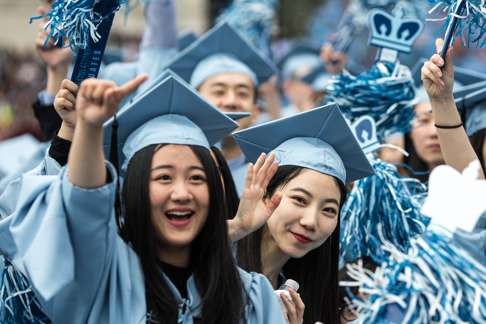
Why some Chinese students struggle at universities in the US
An Arizona university teacher explains how a lack of basic English skills is causing problems for a number of overseas Chinese students
I was packing up 37 years’ worth of books and materials the other day when I found two packets of beautifully embossed bookmarks from a Chinese student. I remembered him. He sat in the front row of my “Introduction to Russian History” course, and he never missed a beat. He showed up for every office hour, read all the material, asked questions after class and earned an A.
I remembered the rest of the Chinese students, too, although not individually. There were 15 or so of them in a class of 120. They huddled together in the back row. When exam time came, they all flunked. Reading their exams, I understood why they had not come to see me when I reached out to them. They didn’t know enough English to ask the questions they needed answers to. One of my teaching assistants spoke Mandarin. Even that didn’t help.
Over the past five years, Chinese students have flooded American campuses. Currently, 974,926 international students are studying in the United States; about a third of them are from China. These visitors have not always got good press. About 8,000 Chinese students were expelled from US colleges and universities in 2013-14, primarily because of cheating or failing. Chinese applicants have been accused of cheating on the TOEFL (a mandatory English-language proficiency test international students must take to gain admittance into a US university). Articles abound suggesting many are unprepared for the rigours of US higher education.
I feel for them. I studied in the Soviet Union in the 1970s, trying to understand lectures in Russian. But I had basic language skills. Many students I encounter today do not. Last year, one of my Chinese students could barely form the letters of the Roman alphabet. As a professor, I’m not always sure what to do. I don’t water down my lectures, but I present the material in as many different mediums as I possibly can, hoping one might be more comprehensible than the next. Still, in these large courses that are already a teaching challenge with increasing student enrolments, I know I’ll lose most of my Chinese students.

I would never suggest, though, that these students shouldn’t come. From a purely economic point of view, they bolster the US economy. In 2014, these students contributed more than US$30 billion to the economy, according to a report by the Department of Commerce. International students, often paying full freight, also help colleges address budget shortfalls (especially as state governments cut funding). At my university, there is a huge incentive to accept international students because they pay the same tuition, US$35,000 per year, as out-of-state students as opposed to the US$12,000 a year in-state students pay.
Ultimately, however, we need these international students for reasons that go way beyond dollar figures because they help counter what I call the new isolationism. Today, we’re dealing with dangerous Islamophobia; one of our presidential candidates is suggesting that we ban all Muslims from entering the country. For many, the answer to immigration is simply to build a higher wall between the United States and Mexico. Foreign students can help counter the fear and ignorance that fuel these policy positions. Their presence, and their relationship with Americans, helps shape, inform and correct how we perceive the rest of the world.
Adele Barker is a professor of Russian at the University of Arizona
The Washington Post

